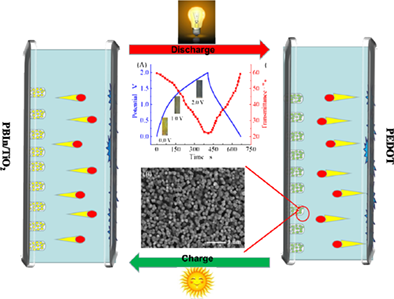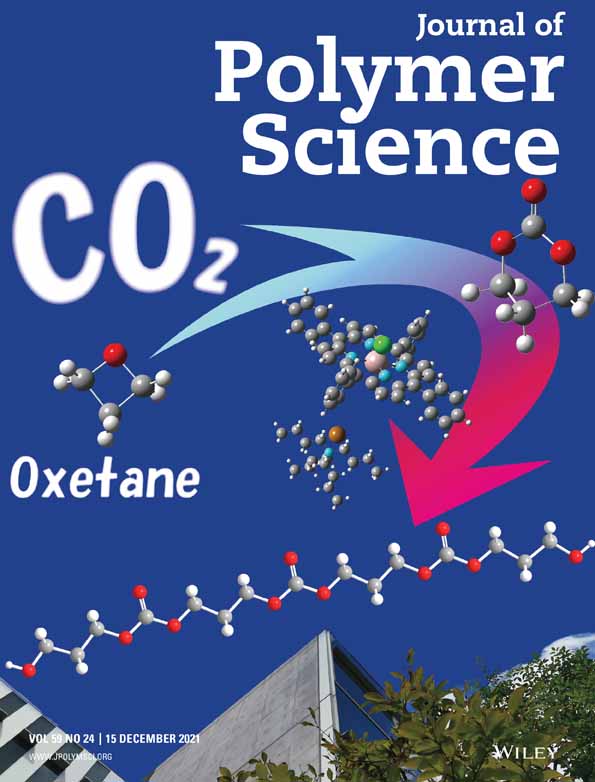Novel poly(1H-benzo[g]indole)/TiO2 nanocomposites for high-performance electrochromic supercapacitor application
Funding information: national natural science foundation of china, Grant/Award Number: 51973102; natural science foundation of shandong, Grant/Award Number: ZR2019MB067; open foundation of state key laboratory base of eco-chemical engineering, Grant/Award Number: STHG2003; qinghai provincial basic research program, Grant/Award Number: 2021-ZJ-710; talent fund of qust, Grant/Award Number: QUSTHX201933
Abstract
Poly(1H-benzo[g]indole) (PBIn)/TiO2 nanocomposites with core-shell nanorod array morphology are successfully prepared via simply hydrothermal synthesis combined with electrochemical polymerization. The synergistic effect between PBIn and TiO2 and the matched energy level distribution make PBIn/TiO2 nanocomposites have a specific capacitance of 29.65 mF cm−2. At the same time, it can reversibly change between light yellow and light green and show excellent cycling stability (86% retention after 3000 cycles). Thus, the electrochromic supercapacitor device (ESD) is also constructed based on PBIn/TiO2 nanocomposite and poly(3,4-ethylenedioxythiophene). This ESD shows a good specific capacitance (13.2 mF cm−2) and high-coloring efficiency (487 cm2 C−1). In the charging and discharging stage, the color of ESD can reversibly change between yellow and dark blue. Thus, the accumulated energy state of the ESD can be simply judged by monitoring the color or transmittance value of the device. To verify the good energy storage and actual application, this ESD can light up the Light Emitting Diode (LED) after charging, which provides new possibilities for the application of intelligent supercapacitors in the future.
Graphical Abstract
Open Research
DATA AVAILABILITY STATEMENT
The data for this paper is available.





